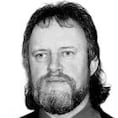He was part of Capt Scott’s ill-fated South Pole expedition along with Tom Crean, but the forgotten Irish explorer is finally to be honoured in his native west Cork
HE’S BEEN described as the forgotten Irishman of Antarctic exploration, but now Patrick Keohane is to be honoured in his native west Cork, 100 years after he played a central role in Capt Robert F Scott’s ill-fated Terra Nova expedition to the South Pole.
Keohane was one of four Irishmen on Scott’s 1911 expedition but, according to Diarmuid Begley of the Patrick Keohane Memorial Project Committee, unlike Tom Crean, Robert Forde and Murt McCarthy, he has not been honoured with any memorial to his part in the expedition.
“It’s fitting that Keohane be remembered,” says Begley. “Scott shared a tent with him for part of the journey from Cape Evans to the South Pole, and it’s clear from Scott’s diaries he held Keohane in high regard – he writes that his good cheer and courage were a great comfort to him.”
Born in 1879 at Barry’s Point in Courtmacsherry, Keohane enlisted in the Royal Navy in 1895, aged 16, and over the next 12 years rose to the rank of petty officer. On May 7th, 1910, he was chosen by Scott to be part of his team for his South Pole expedition.
According to Michael Smith, author of Great Endeavour – Ireland’s Antarctic Explorers, Keohane was recommended by fellow Corkman Robert Forde, but he impressed Scott at interview when asked why he was volunteering for such a mission.
“Keohane, in typically laconic style, replied that he ‘always wanted to see what’s on the other side of the hill’, and was recruited on the spot,” writes Smith, adding that, though not a tall man, Keohane exhibited great physical and mental toughness.
Keohane was one of 15 chosen by Scott to accompany him from their base at Cape Evans on his 900-mile trek for the pole in October 1911. It was while crossing the melting ice of the Beardsmore Glacier that Scott noted Keohane’s good cheer.
In his diary, Scott recorded how Keohane had composed an appropriate rhyme that caught their predicament: “The snow is all melting and everything’s afloat/ If this goes on much longer, we shall have to turn the tent upside down and use it as a boat.”
Initially helping with the ponies, Keohane became one of the men hauling sled teams when the ponies had to be shot, but he was disappointed when, on December 20th, 1911, he was chosen by Scott to be in the first support party to return to base.
In the event it was a decision that saved Keohane’s life as, after sending back a second support team, Scott and his companions, Capt Lawrence Oates, Lt Henry Bowers, Dr Edward Wilson and Petty Officer Edgar “Taff” Evans were all to perish.
Keohane made it back to Cape Evans and on March 26th, 1912, he was chosen by the now second-in-command of the expedition, Dr Edward Atkinson, to accompany him in a search for Scott, but poor weather forced them back after they had travelled just 60 miles.
Seven months later, Keohane was part of another search group who, on November 12th, 1912, found the frozen bodies of Scott, Bowers and Wilson in their tent – some 11 miles from a supply depot which would have saved their lives.
Scott and his companions had reached the South Pole on January 16th, 1912, only to discover Norwegian Roald Amundsen had beaten them, reaching the pole more than a month earlier, on December 14th, 1911, leaving them to face what Scott described as a “wearisome return” and a journey they could not complete. Taff Evans died in the snow after a fall; Oates, almost crippled with frostbite, left their tent in a blizzard, saying, famously, “I’m going outside and may be some time”; the remaining three slowly starved and froze to death.
According to Smith, who will give a talk on Keohane as part of the commemoration, Keohane’s last role in the expedition was to help erect a 4m high wooden cross in Antarctica in memory of Scott, Wilson, Bowers, Oates and Evans.
Local interest in west Cork in Keohane, who married local woman Bridget Mary Ivy O’Driscoll at Barryroe Church on May 5th, 1914, intensified after Barryroe Co-op published a calendar in 2004 featuring photographs of him in the Antarctic.
The idea to commemorate Keohane, who died in the UK in 1950, took off in February 2011 when a few interested individuals formed a committee and approached West Cork Development Partnership, who agreed to back the project. Bandon sculptor Don Cronin was commissioned to cast a bronze statue of Keohane, which will be unveiled this Sunday, August 19th at Lislee Court, overlooking Keohane’s birthplace in Courtmacsherry, by Cork-born polar adventurer Dr Clare O’Leary.
In his book, Michael Smith recalls that when Keohane was being buried in Plymouth in 1950, another of his expedition comrades, Apsley Cherry-Garrad, in his oration, said of him: “He always wanted to see the other side of the hill – and he saw.”







